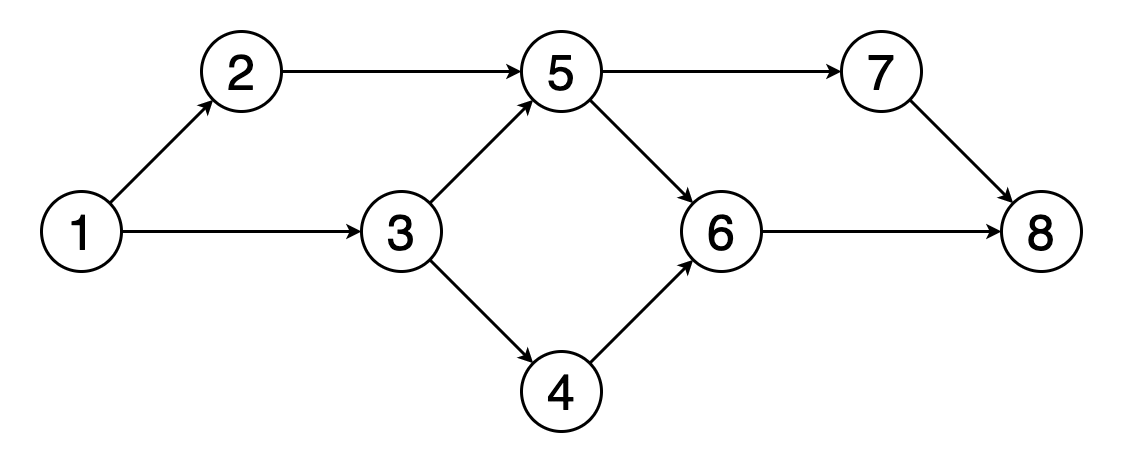Topological sorting of a graph is a linear ordering of its vertices so that for each directed edge (u, v) in the ordering, vertex u comes before v.
Figure shows an example of a topological ordering of vertices (1, 2, 3, 5, 4, 6, 7, 8). You can see that vertex 5 should come after vertices 2 and 3. Similarly, vertex 6 should come after vertices 4 and 5.
Steps
- Topological sort is an ordering of vertices in a directed acyclic graph [DAG] in which each node comes before all nodes to which it has outgoing edges.
- Indegree is computed for all vertices, starting with the vertices which are having indegree 0.
- Queue can be used to keep track of vertices with indegree zero. While the queue is not empty, a vertex is removed, and all edges adjacent to it have their indegrees decremented.
- Topological sorting for a graph is not possible if graph is not DAG.
- If a Hamiltonian path exists, the topological sort order is unique. If a topological sort does not form a Hamiltonian path, DAG can have two or more topological orderings.
Applications
- Used in instruction scheduling.
- Used in data serialisation.
- Used to determine the order of compilation tasks to perform in makefiles.
- Used to resolve symbol dependencies in linkers.

Comments
Post a Comment